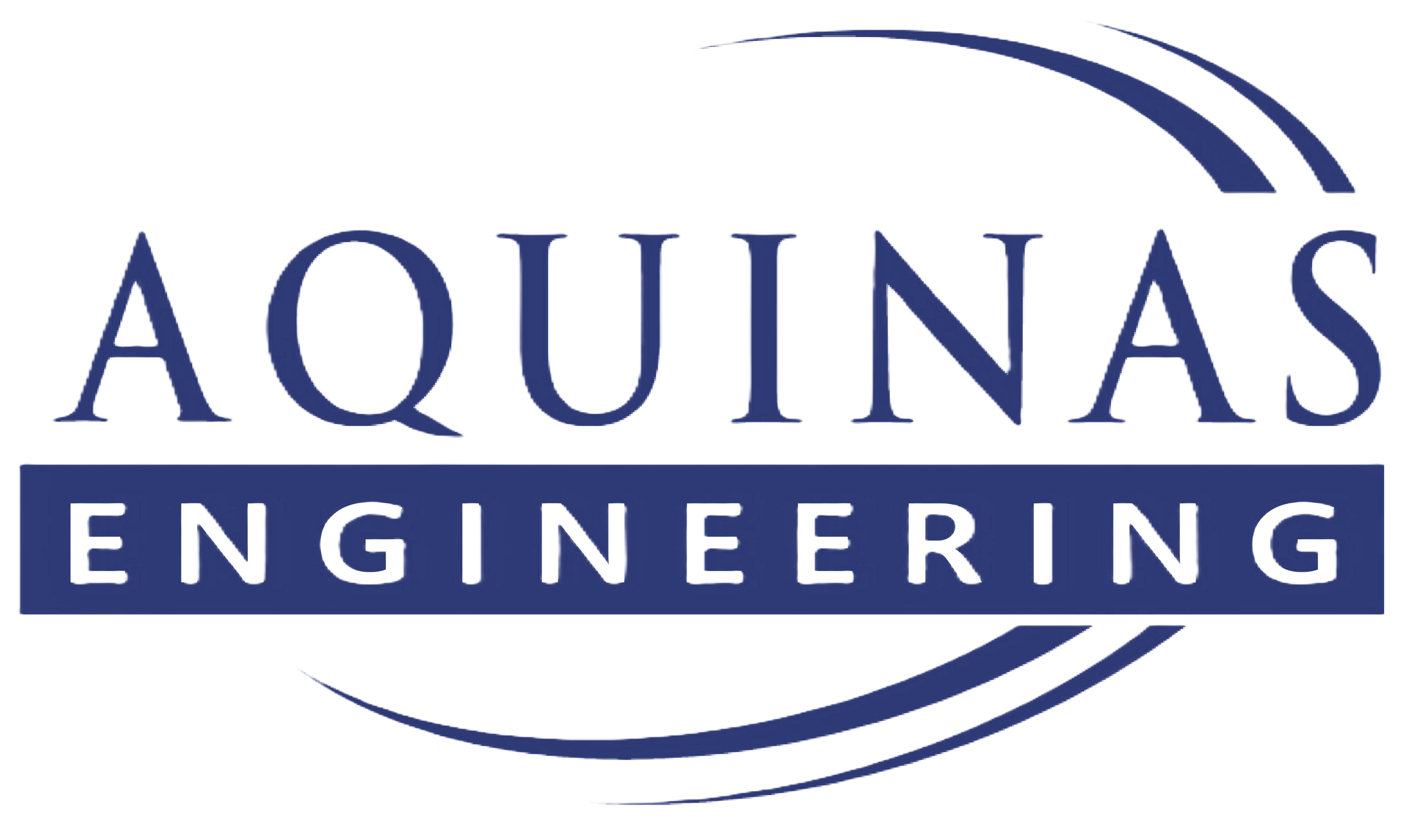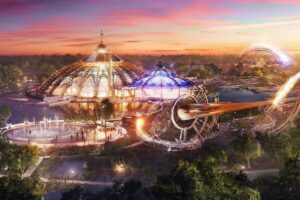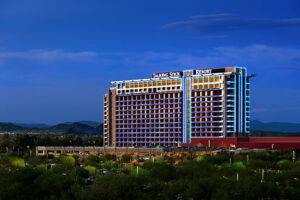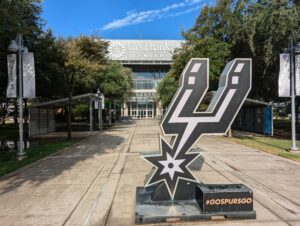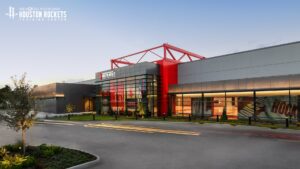Rome was not built in a day – but can the city of the future be built in a decade? The Line seeks to create a new way for modern cities to evolve. Drawing critics and acclaimers alike, The Line offers structural engineers around the world an opportunity to learn from this momentous project. This article will focus on five lessons structural engineers can learn from Saudi Arabia’s The Line.
1. Think Big: Set Bold, Long-Term Visions
The Line, a modernist utopian project within Saudi Arabia’s NEOM initiative, is an ambitious structural engineering marvel. NEOM’s vision is to be “a land of the future, where the greatest minds and best talents are empowered to embody pioneering ideas and exceed boundaries in a world inspired by imagination”. Spanning 200 meters wide and 500 meters above sea level, the grand length of 170 kilometers of The Line is extraordinary, with the excavation being visible from space. The Line anticipates housing 9 million residents by the end of the project. More than a structure, The Line is a multi-phase construction project that will result in a cutting-edge community.
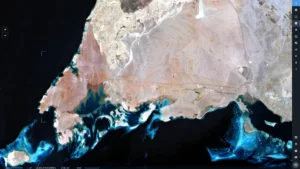
Similar ambitious utopian projects around the world have received mixed results. Brasilia in Brazil, India’s Chandigarh, Malaysia’s Putrajaya and Masdar City in Abu Dhabi were all cities created with master plans, building cities out of very little initial infrastructure. Similarly, The Line has announced that only 2.4 of the planned 170 kilometers will be completed by the year 2030, suggesting that the kingdom’s ambitious goals may not be achieved within the initial timeline. Though some previous examples fell short of their initial objectives, and NEOM could also change the plan, there is no doubt that the environment has and will be radically changed.
To achieve master projects, a master plan must be implemented from the inception of the project and followed through with consistency. Structural engineers often work on projects that incorporate many moving pieces and multiple companies. Effective communication, mutual understanding, and positive attitudes are needed to accomplish grand feats like The Line. Regardless of the ultimate success or failure of The Line, the project’s ambitious ventures are to be admired by engineers and dreamers alike.
2. Rethink Space: Building in Three Dimensions
As part of the sweeping NEOM initiative, The Line aims to completely reimagine Saudi Arabia’s northwestern frontier. The immensity of the project has been broken into phases, like how a structural engineer may delegate massive projects to different time frames. The first phase set to be completed is called the Hidden Marina, a centralized point on The Line that will feature anchor assets such as a chandelier the size of the Eiffel Tower, a 500 meters tall government building, and a soccer stadium set to host the 2034 World Cup.
Traditional buildings for structural engineers have lived on the X, Y, and Z axes, with foundations on the ground and constructed vertically. The Line envisions a city in three dimensions by effectively folding two structures into each other. Rather than building a city upwards to reduce space, buildings are designed to utilize the vertical and horizontal space within the walls of The Line. This is accomplished by creating a grid within The Line: multiple 16-meter-thick primary decks along the length and vertical streets running from the top of the structure to the bottom. The goal is to ensure residents are within a five-minute radial walk of their daily needs, connecting entities horizontally, vertically, and crossways. Additionally, a high-speed railway system will be developed underground, capable of transporting citizens from one end of The Line to the other in 20 minutes.
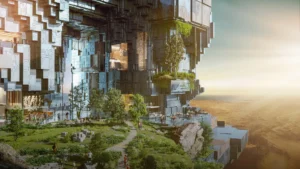
With a budget of $1.5 billion, the project allows for extensive experimentation on the city’s infrastructure. Not all projects have the same financial opportunities to explore unique structural setups. However, ambitions like The Line can inspire creativity in architects and structural engineers to push the limits on what they think can be achieved. A popular question goes “How do you eat an elephant? One bite at a time”. Splitting The Line into phases, modules, and assets allows NEOM developers to take one bite at a time of this elephant of a city.
3. Design With, Not Against, Nature
The undeniable need for environmentally conscious projects has encouraged engineers to develop innovative solutions to maintain high quality production while being ecofriendly. Many of these solutions involve demolishing the existing environment on the property and redeveloping around the finished landscape. Mega metroplexes such as New York City often have places designated for the natural environment such as Central Park. The Line seeks to incorporate the environment into the fabric of this utopian society by being a city in a park, rather than a park in a city. The Line structure allows it to use 10% of the land that a traditional city would, helping to preserve the surrounding landscape.
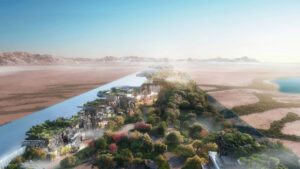
Despite popular misconceptions, Saudi Arabia’s Neom region has a diverse landscape. In fact, the NEOM project is diversified among several projects. Oxygon is a future industrial city that uses the shoreline for ease of trade among ships. Trojena, a luxury tourist destination for adventures in the mountains, plans to host the Asian Winter Games in 2029. Sindalah is a luxury resort in the islands off the southwestern coast of the kingdom which according to reports, is 99% complete.
The Line’s 170 kilometers plan to stretch through three different types of terrain in the oceanside, mountains, and valley desert. Planning to house 9 million people, The Line vows to run entirely on renewable energy. There are no cars or roads planned in this utopia, drastically reducing carbon emissions. Transportation will involve high speed rails, general mass transit, vertical transportation like elevators, electric bikes, and other small electric vehicles.
In a world where tomorrow’s environment is dependent on what we do today, structural engineers must be mindful of preserving the environment upon which they develop. Working with the environment and not against it can help engineers integrate the environment and innovation, saving a better world for tomorrow.
4. Innovate Through Constraints
It is a tall task to build a city in the middle of the desert. The heat and lack of resources provide nontraditional barriers to establish this utopia. Additionally, the relatively narrow, tall, and long dimensions of The Line require creative and resourceful solutions. While not all structural engineers will work exclusively in the desert, unique design, lack of investment or materials could be a reason for them to be extra resourceful.
To account for the desert heat, The Line has adopted a mirrored glass exterior as protection against the harsh desert conditions. The mirrored façade deflects heat away from the city, preventing absorption. The design includes glass panels that open and close for ventilation, along with the hollow spaces between the outer walls.
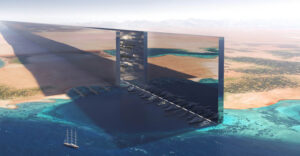
To manage the quantity of people and infrastructure planning to live in The Line, developers plan to use AI Technology to create a cognitive city. Autonomous transportation systems, smart homes, and other digital innovations and technologies implemented in The Line improve the city’s security, communication and management systems. These innovative features are propelling The Line into the future and can be replicated by structural engineers in their own projects.
5. Honor People, Not Just Projects
The incredibly ambitious project of The Line is not without controversy. Every project has ramifications that create ripple effects with every decision that is made.
Although Saudi Arabia’s northwestern region was not urbanized, small communities and villages inhabited the NEOM sector. Known as the Huwaitat Tribe, they received eviction notices for their houses since they interfered with the location of the The Line. Some reports suggest that the tribe and their villages were forcibly relocated if they rebelled against the kingdom’s eviction. A UK-based human-rights group ALQST estimates that upwards of 6,000 people were displaced from their homes. Satellite images show that an entire village was wiped out. One resident named Abdul Rahim went to social media to voice his disagreement with the kingdom to move him and his family from his home. He was later labeled a terrorist by the Saudi government and reportedly killed in a confrontation.
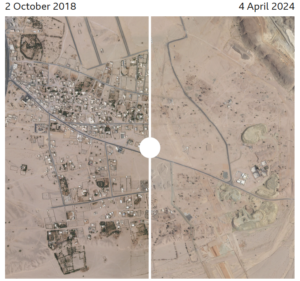
Structural engineers and other urban developers should always strive for greatness. However, our desire for success should never justify any evil means of arriving there. Engineers have a responsibility to uphold the dignity of all human life affected by their projects. Regardless of whether the project is delayed, changed, or even canceled, the value of respect should never be broken.
Final Thoughts
The Line represents a bold vision for the future of urban development, pushing the boundaries of what is possible in structural engineering. While the project offers numerous lessons in ambition, innovation, environmental consciousness, resourcefulness, and respect, it also serves as a reminder of the ethical responsibilities that come with such grand endeavors. Structural engineers and urban developers must balance their drive for progress with a commitment to human dignity and environmental stewardship. As we look to the future, let us be inspired by The Line’s potential while remaining mindful of the impact our projects have on people and the planet. The true measure of success lies not only in what we build but in how we build it and whom we serve along the way.
By Aquinas Engineering
Sources
Business Insider. “Satellite Images Reveal The Reality of Saudi Arabia’s $2 Trillion Megacity In The Desert.” YouTube, 19 Feb. 2025, www.youtube.com/watch?v=gi24Xl2PJIc.
Chappell, Bill. “A 105-mile-long City Will Snake through the Saudi Desert. Is That a Good Idea?” NPR, 26 July 2022, www.npr.org/2022/07/26/1113670047/saudi-arabia-new-city-the-mirror-line-desert.
Fattah, Zainab, and Matthew Martin. “Saudis Scale Back Ambition for $1.5 Trillion Desert Project Neom.” Bloomberg, 5 Apr. 2024, www.bloomberg.com/news/articles/2024-04-05/saudis-scale-back-ambition-for-1-5-trillion-desert-project-neom.
Harris, Johnny. “Why Saudi Arabia is Building a $1 Trillion City in the Desert.” YouTube, 18 Dec. 2024, www.youtube.com/watch?v=UGzI-ABpy6k.
NEOM. “NEOM Talks at Davos | THE LINE Overview.” YouTube, 26 Feb. 2025, www.youtube.com/watch?v=jEyVhn6AX5Y.
NOEM. “NOEM The Line.” Line NEOM, 31 Mar. 2025, line-neom.com/.
Ramirez, Alex. “The Line 2025: Saudi $1 Trillion Megacity Faces Delays and Financial Struggles.” Engineerine, 7 Mar. 2025, engineerine.com/neom-line-saudi-faces-delays-struggles/.
Thomas, Merlyn, and Lara El Gibaly. “Neom: Saudi Forces ‘Told to Kill’ to Clear Land for Eco-city.” BBC, 8 May 2024, www.bbc.com/news/world-middle-east-68945445.
